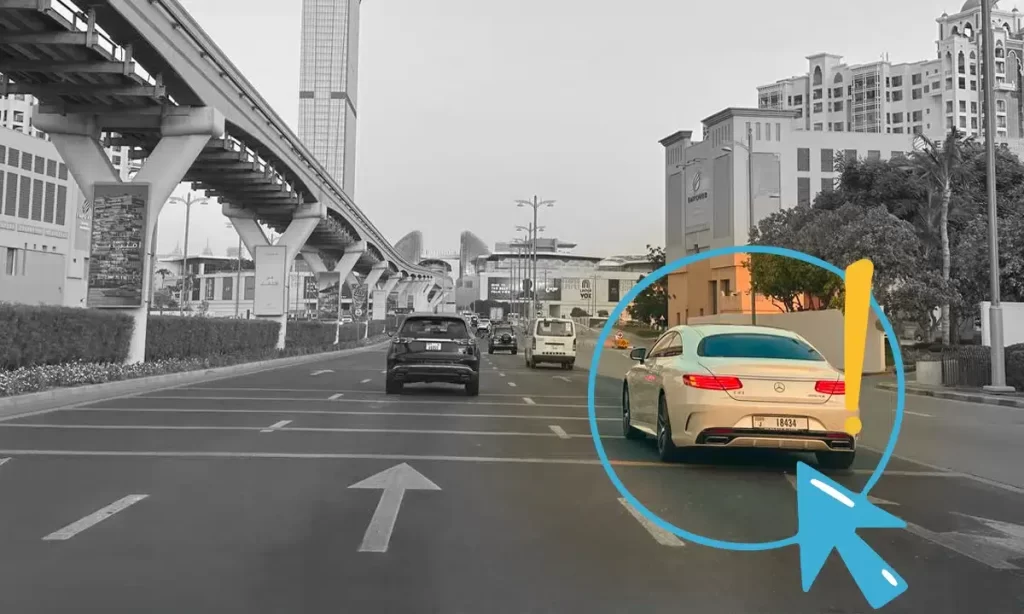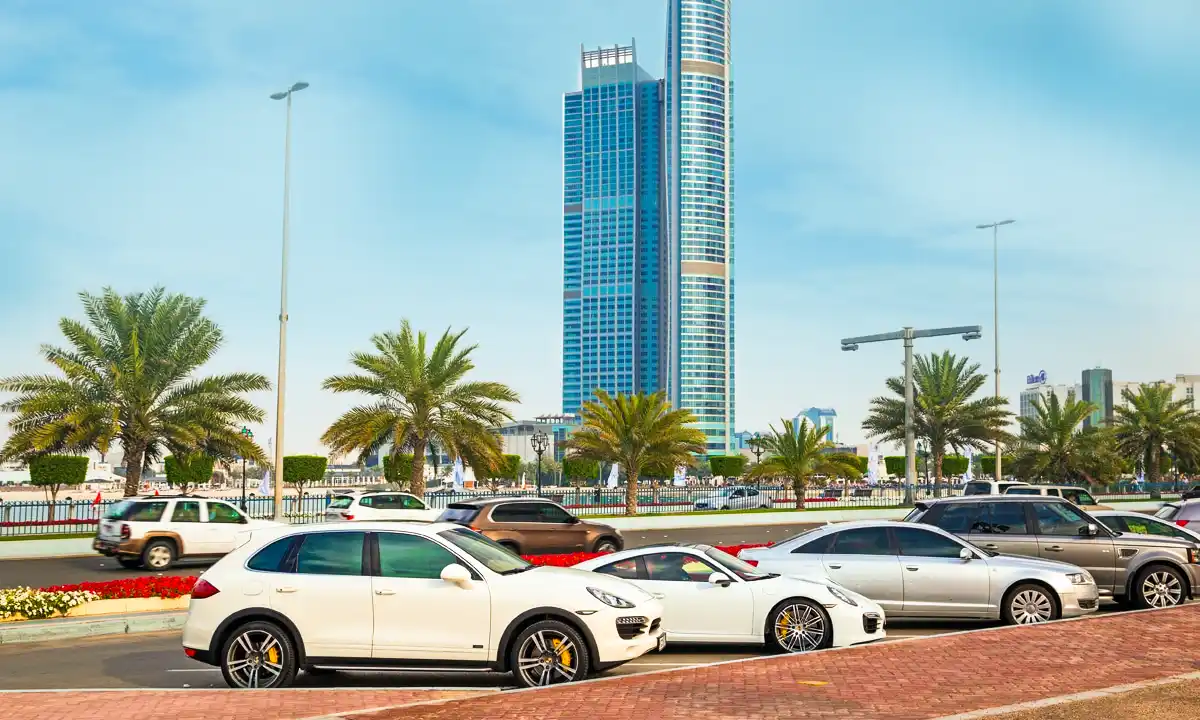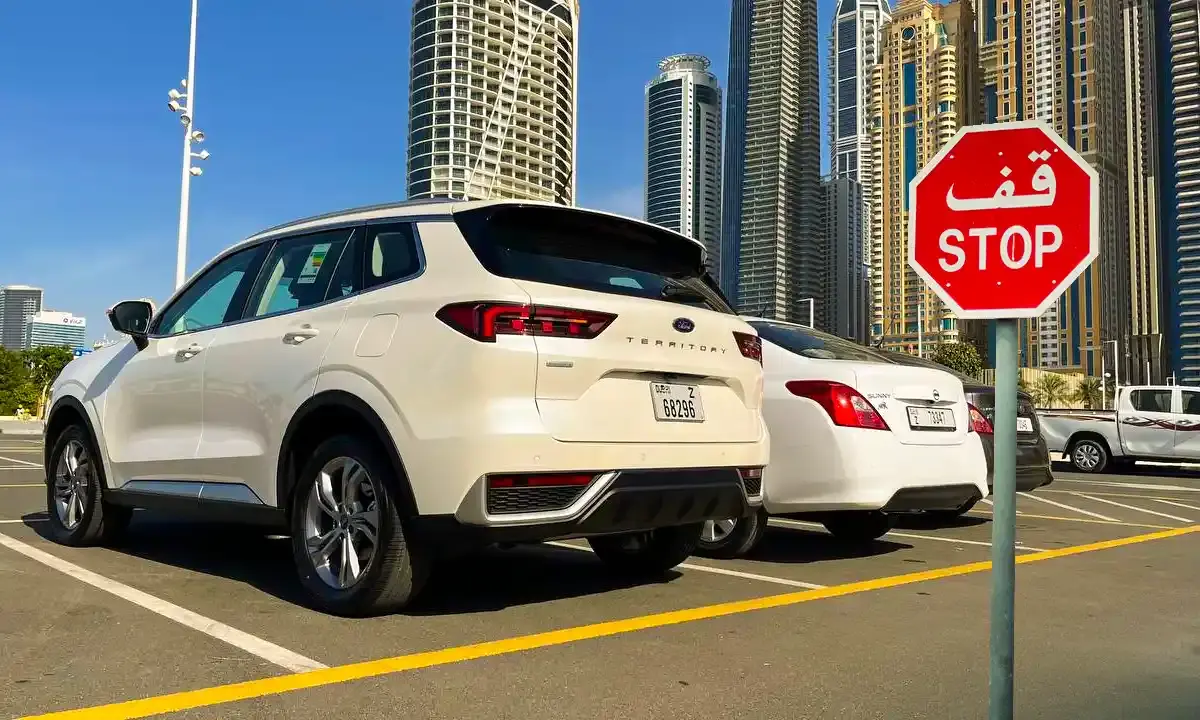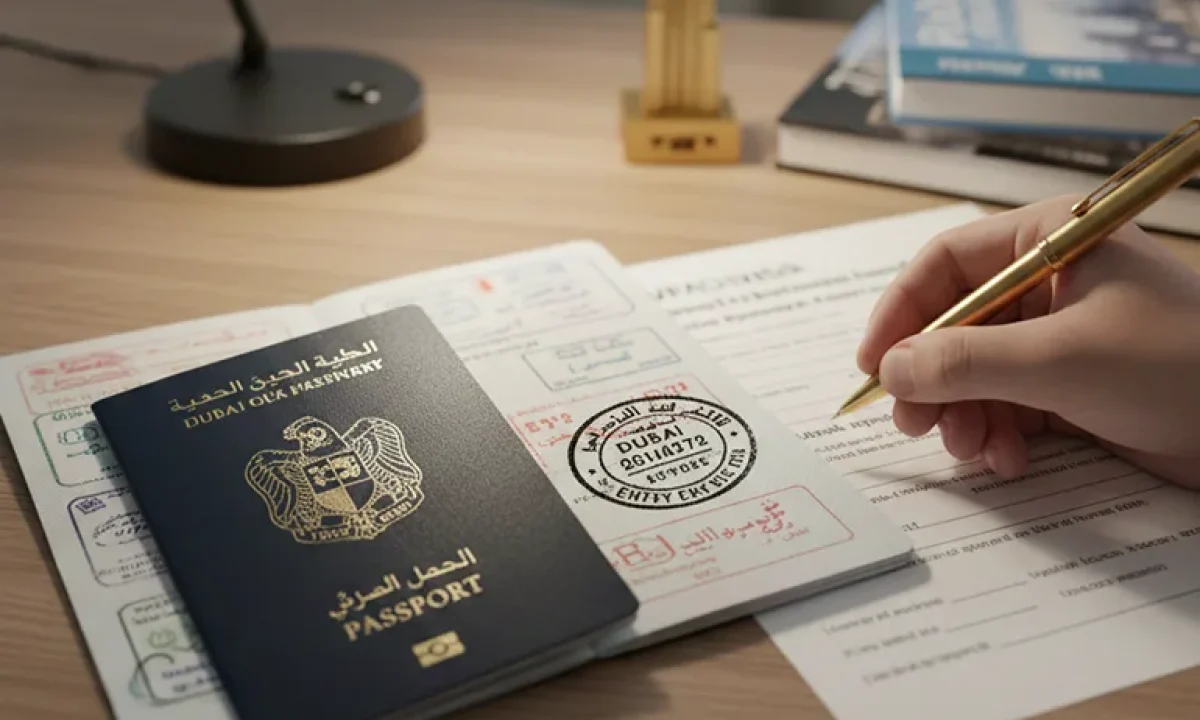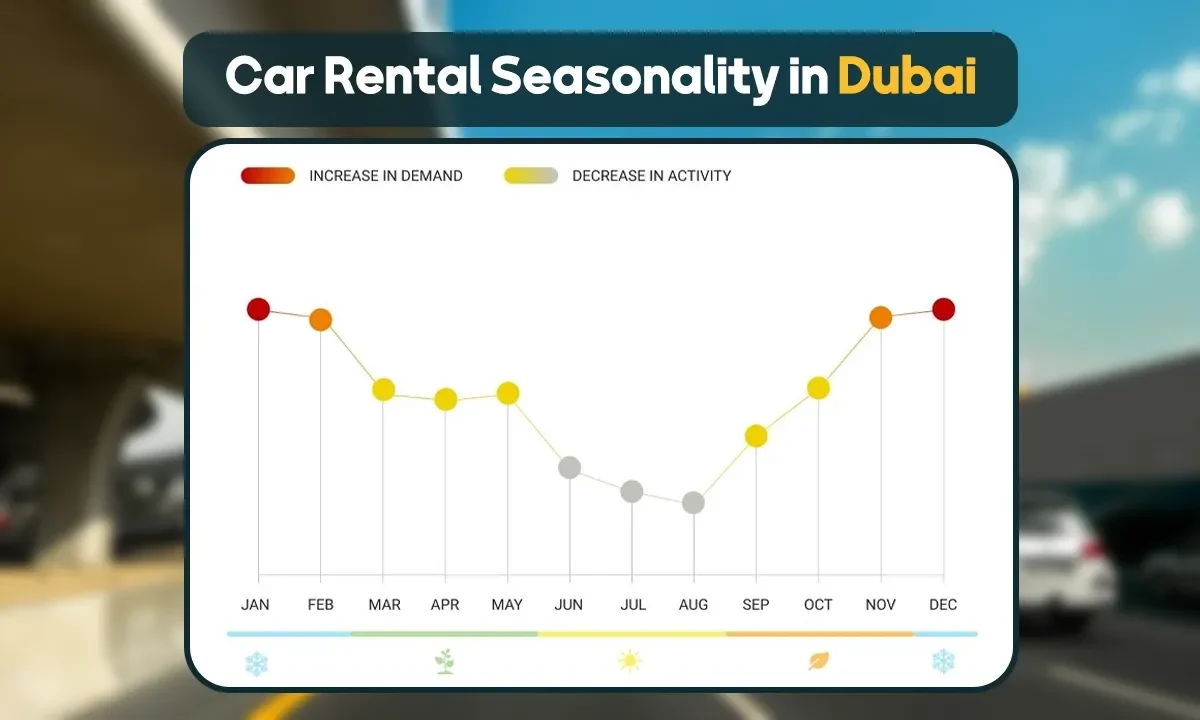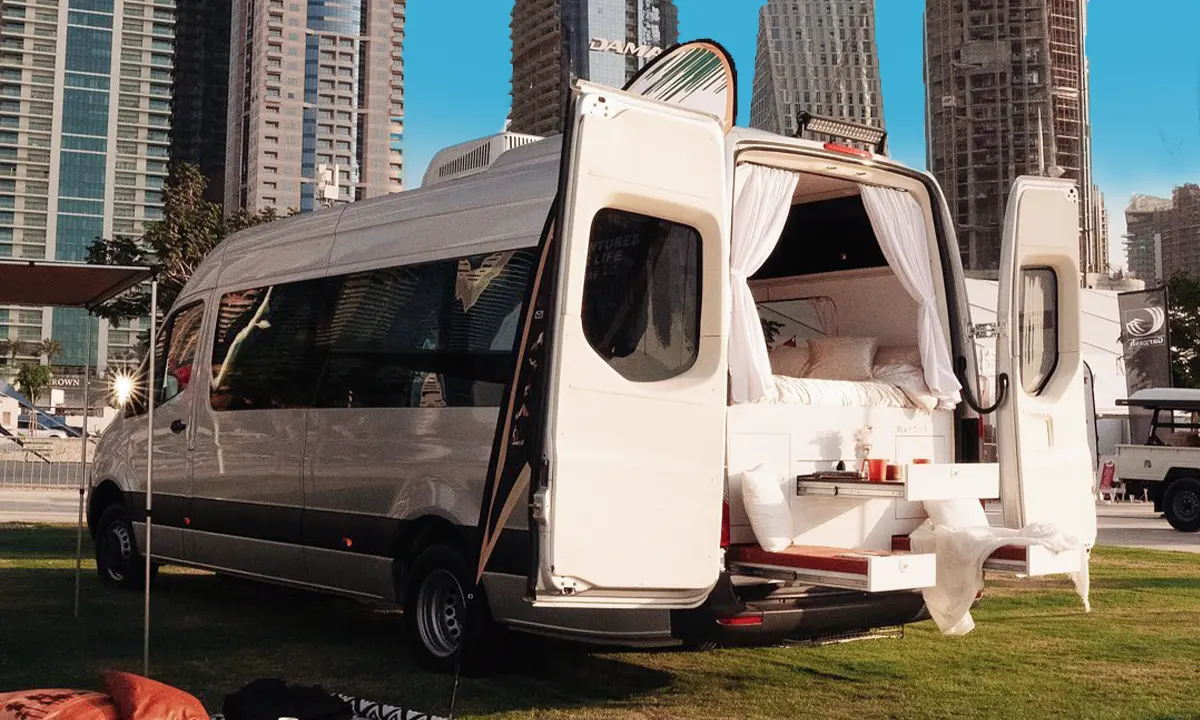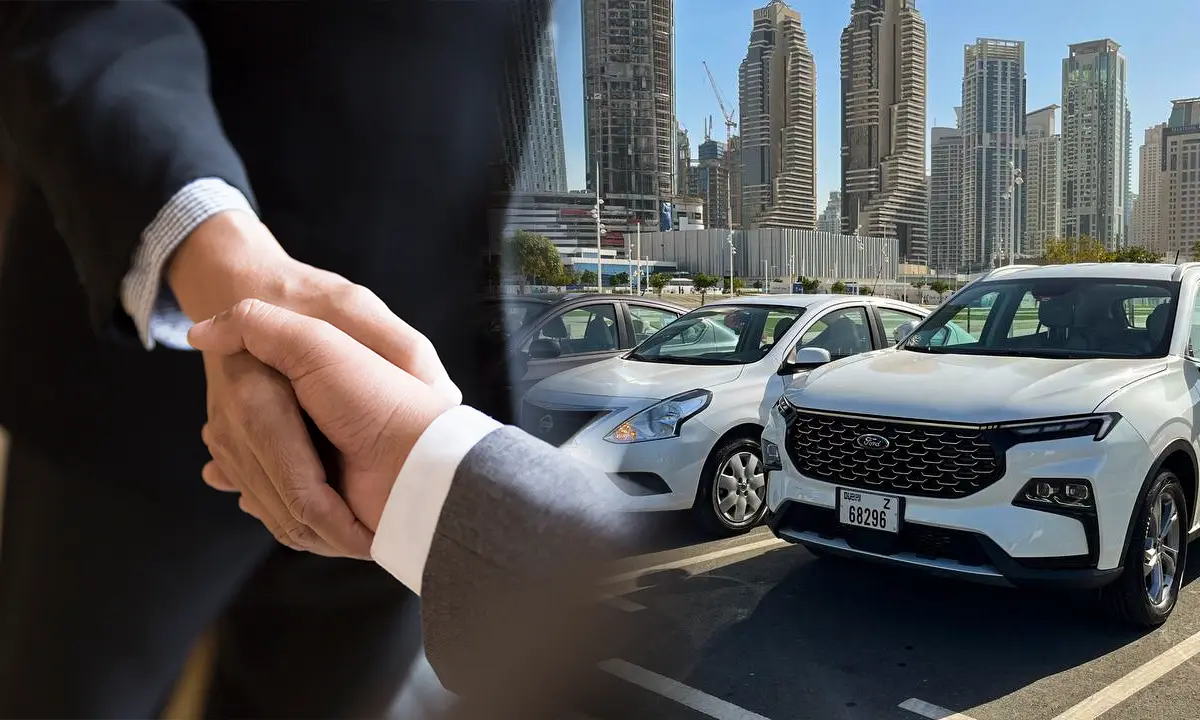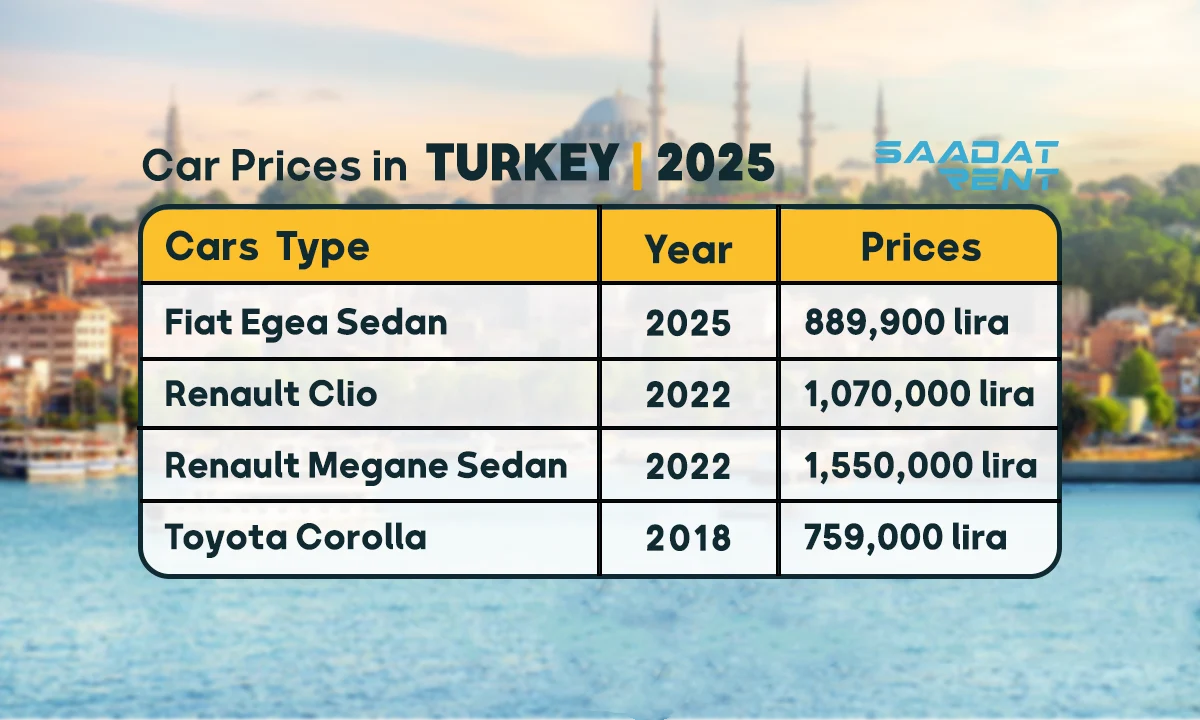When transitioning from a country with left-hand steering to driving in the UAE, several key differences need to be considered. In left-hand steering wheel (LHSW) countries, vehicles drive on the left side of the road, while in the UAE, driving is on the right side. This affects lane discipline, turning patterns, and overtaking maneuvers. Road signage and traffic rules may also differ, requiring drivers to adapt to new symbols and regulations. Adjusting to these differences is crucial for safe and confident driving in the UAE.
Driving Differences, Left-Hand Steering vs. UAE Roads
When transitioning from a country with left-hand steering to driving in the UAE, several key differences need to be considered. In left-hand steering wheel (LHSW) countries, vehicles drive on the left side of the road, while in the UAE, driving is on the right side. This fundamental difference affects various aspects of driving, including lane discipline, turning patterns, and overtaking maneuvers.
- Driving Orientation
- Lane Discipline and Traffic Flow
- Road Layout and Signage
- Vehicle Controls and Adaptation
- Safety and Local Practices
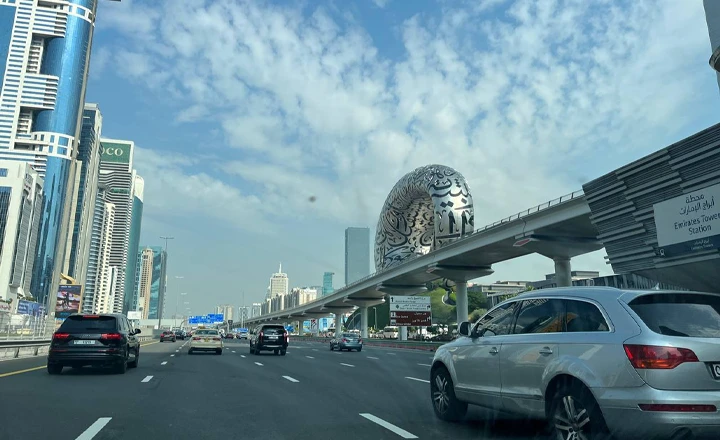
Why Adapting to Right-Hand Driving in the UAE is Essential?
Adapting to right-hand driving in the UAE is important for several reasons, especially for tourists and new residents.
- Safety on the Road
Driving on the correct side of the road is essential to prevent accidents. In the UAE, vehicles drive on the right side, and adhering to this rule helps reduce the risk of head-on collisions and other traffic accidents. When everyone follows the same driving rules, the flow of traffic is more predictable and safer for all road users.
- Legal Compliance
Driving on the right side of the road in the UAE is a legal requirement. Not complying with this can result in fines, penalties, or even more severe legal consequences. Tourists and expatriates need to be aware that driving on the wrong side can attract significant fines and points on their driving record.
- Navigational Ease
Road signs, signals, and lane markings in the UAE are designed for right-hand driving. Familiarizing yourself with this driving style makes it easier to understand and follow these signs. Additionally, GPS and other navigation tools are configured for right-hand driving, ensuring that the directions you receive are clear and easy to follow.
- Integration with Local Driving Culture
Understanding and adapting to right-hand driving also means integrating into the local driving culture. This includes recognizing common driving behaviors such as lane discipline and the proper use of indicators. When everyone follows the same driving conventions, interactions on the road, such as merging and overtaking, become smoother and less stressful.
- Practical Considerations
Most vehicles in the UAE are designed for right-hand driving. This means that controls, mirrors, and other features are optimized for this driving style, making it easier and more intuitive to drive. Car rental agencies also provide vehicles configured for right-hand driving, so being comfortable with this driving style is essential for anyone planning to rent a car.
- Emergency Preparedness
In the event of an emergency, being familiar with right-hand driving conventions ensures you can respond appropriately and safely. This includes knowing how to navigate roundabouts, intersections, and highways. Understanding the local driving style also makes it easier to communicate with roadside assistance and emergency services, ensuring quicker and more effective help when needed.
By adapting to right-hand driving in the UAE, you ensure your safety, comply with local laws, and integrate smoothly into the traffic system. This adaptation is crucial for a safe and confident driving experience in the UAE.
Key Takeaways from the Right-Hand Driving Guide for the UAE
Adapting to right-hand driving in the UAE is essential for several reasons, particularly for tourists and new residents. Here are the key points you should know:
- Safety on the Road
Driving on the right side of the road is critical to preventing accidents and ensuring the safety of all road users. It helps maintain a predictable flow of traffic, reducing the risk of collisions.
- Legal Compliance
Following the right-hand driving rules in the UAE is mandatory. Not adhering to these laws can result in fines, penalties, or more severe legal consequences. Ensuring you drive on the correct side of the road helps you stay compliant and avoid trouble.
- Navigational Ease
Understanding and following road signs, signals, and lane markings is easier when you are accustomed to right-hand driving. Additionally, GPS and navigation tools are configured for this driving style, making it simpler to follow directions and reach your destination efficiently.
- Integration with Local Driving Culture
Adapting to right-hand driving means understanding local driving behaviors and etiquette. This includes knowing how to navigate roundabouts, use indicators properly, and practice good lane discipline. These practices help you interact smoothly with other drivers on the road.
- Practical Considerations
Most vehicles in the UAE are designed for right-hand driving. This includes the positioning of controls, mirrors, and other features. Being comfortable with this setup is essential, especially if you plan to rent a car during your stay.
- Emergency Preparedness
Being familiar with right-hand driving conventions ensures that you can respond appropriately in emergencies. This includes knowing how to navigate roundabouts, intersections, and highways safely. It also makes it easier to communicate with roadside assistance and emergency services when needed.
Understanding UAE Road Rules
Basic Traffic Regulations Specific to Right-Hand Driving
In the UAE, driving on the right side of the road is mandatory. This means that all vehicles must adhere to this rule to ensure the smooth and safe flow of traffic. Key regulations include:
- Lane Discipline: Drivers must stay in their lanes and use indicators when changing lanes or making turns. The left lane is typically for faster-moving traffic, while the right lane is for slower vehicles and exits.
- Roundabouts: Traffic within the roundabout has the right of way. Drivers entering the roundabout must yield to vehicles already circulating.
Common Road Signs and Their Meanings in the UAE
Familiarity with road signs is crucial for safe driving. Some common signs include:
- Stop Sign: Indicates that drivers must come to a complete stop and proceed only when the way is clear.
- Yield Sign: Drivers must slow down and give the right of way to other vehicles and pedestrians.
- Speed Limit Signs: Indicate the maximum allowable speed on a particular stretch of road.
- No Entry Sign: Indicates roads or lanes that are not accessible for vehicles.

Speed Limits and Lane Markings
Speed limits in the UAE vary depending on the type of road and location:
- Urban Areas: Typically 40-60 km/h.
- Main Roads: Usually 60-80 km/h.
- Highways: Can range from 100-120 km/h, but always check posted signs as limits can vary.
Lane markings also play an essential role in road safety:
- Solid White Lines: Indicate lanes where changing lanes is not allowed.
- Broken White Lines: Indicate that lane changing is permitted when it is safe to do so.
- Yellow Lines: Often used to separate lanes of traffic moving in opposite directions.
Understanding these basic road rules, common signs, and speed limits is essential for safe and legal driving in the UAE. By adhering to these regulations, drivers can navigate the roads confidently and avoid common pitfalls and legal issues.
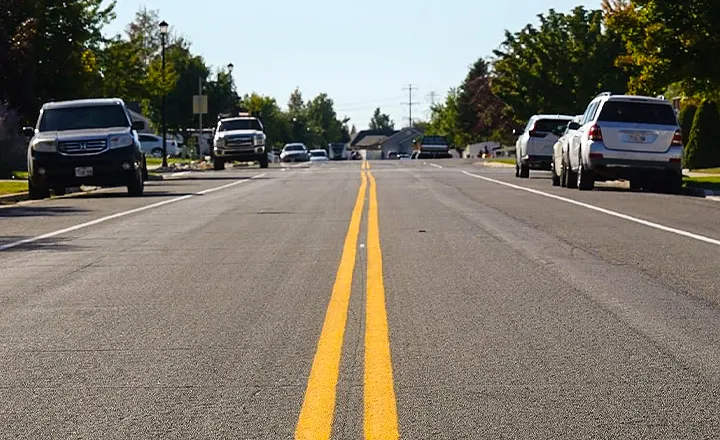
Perfecting Vehicle Preparation for Right-Hand Driving in the UAE
Adjusting to a Left-Hand Steering Wheel for Right-Side Driving
Driving a vehicle with a left-hand steering wheel on the right side of the road requires some adjustments to ensure safety and comfort:
- Familiarize Yourself: Spend some time getting used to the positioning of controls and the feel of the car before driving on busy roads.
- Practice in a Safe Area: Practice driving in a parking lot or a quiet street to build confidence.
Mirror Adjustments
Proper mirror adjustments are crucial for visibility and safety:
- Side Mirrors: Adjust the side mirrors so that you can see the edge of your car and the lane next to you. This helps eliminate blind spots.
- Rearview Mirror: Adjust the rearview mirror to give you a clear view of the road behind you without needing to move your head.
Seating Position
A correct seating position enhances control and comfort while driving:
- Seat Height: Adjust the seat height so you have a clear view of the road and can comfortably reach the pedals.
- Seat Distance: Position the seat so that your arms are slightly bent when holding the steering wheel, and you can press the pedals without stretching.
- Lumbar Support: Ensure proper back support to reduce fatigue during long drives.
Dashboard Controls
Familiarizing yourself with the dashboard controls is essential for safe driving:
- Control Layout: Know the location of essential controls such as lights, wipers, and indicators.
- Dashboard Indicators: Understand the meaning of various dashboard lights and indicators to respond promptly to any issues.
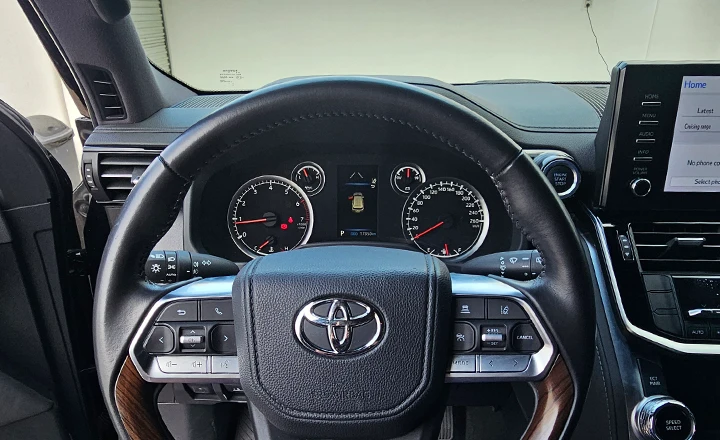
Ensuring Vehicle Compliance with UAE Standards
It’s important to ensure that your vehicle meets UAE regulations for legal and safe driving:
- Licensing and Registration: Ensure your vehicle is properly registered and that you have a valid UAE driving license. Keep all necessary documents in the vehicle.
- Mandatory Safety Equipment: Equip your vehicle with required safety gear, including a fire extinguisher, warning triangle, and first aid kit.
- Vehicle Inspection: Regularly inspect your vehicle to ensure it meets safety standards. This includes checking brakes, lights, tires, and fluid levels.
By taking these steps to prepare your vehicle, you can ensure a safe and comfortable driving experience in the UAE. Proper adjustments and compliance with local standards are key to enjoying your time on the road and avoiding any legal or safety issues.
Mastering Right-Hand Driving in the UAE
Adjusting to right-hand driving involves consistently staying on the correct side of the road. Here are some tips to help:
- Start Slow: Begin by driving on quieter roads to get used to the new driving orientation.
- Focus: Keep your attention on the road, especially during turns and lane changes, to avoid drifting to the left.
Lane Discipline
Maintaining proper lane discipline is crucial for smooth traffic flow and safety:
- Stay Centered: Keep your vehicle centered in your lane, using lane markings as a guide.
- Use the Correct Lane: The left lane is for overtaking, while the right lane is for slower traffic and exits. Always return to the right lane after overtaking.
Maintaining Proper Distances
Keeping a safe distance from other vehicles is essential to avoid collisions:
- Follow the Three-Second Rule: Maintain a minimum three-second gap between your vehicle and the one in front. Increase this distance in adverse weather conditions.
- Adjust for Speed: The faster you’re driving, the more distance you need to maintain.

Understanding and Using Road Signs
Familiarity with road signs ensures you follow the rules and navigate safely:
- Learn Local Signs: Study the common road signs in the UAE, including speed limits, yield signs, and no-entry signs.
- Obey Instructions: Always follow the instructions on road signs to stay compliant and safe.
Navigating Intersections and Roundabouts
Intersections and roundabouts can be challenging for new drivers in the UAE:
- Approach Slowly: Slow down as you approach intersections and roundabouts.
- Yield When Required: Yield to traffic already in the roundabout and be prepared to stop if necessary.
- Use Indicators: Signal your intentions well in advance to inform other drivers of your actions.
Right-of-Way Rules
Understanding right-of-way rules helps prevent accidents and ensures smooth traffic flow:
- Pedestrian Crossings: Always give way to pedestrians at crosswalks.
- Roundabouts: Vehicles inside the roundabout have the right of way.
- Intersections: Yield to vehicles on your right at uncontrolled intersections.
Proper Use of Indicators
Using indicators correctly is vital for communicating with other drivers:
- Signal Early: Activate your turn signals well before making a turn or lane change.
- Clear Intentions: Ensure your indicators clearly show your intended direction to avoid confusion.
- Cancel Indicators: Turn off your indicators after completing the maneuver to prevent misleading other drivers.
Practical Driving Tips for Right-Hand Driving in the UAE
Navigating highways in the UAE requires careful attention and smooth transitions:
Entering Highways:
- Use Acceleration Lanes: Accelerate to match the speed of traffic before merging.
- Check Blind Spots: Always check your mirrors and blind spots before entering the highway.
- Signal Early: Use your indicators to signal your intention to merge well in advance.
Exiting Highways:
- Plan Ahead: Move to the exit lane in good time to avoid last-minute lane changes.
- Reduce Speed Gradually: Slow down in the deceleration lane, not on the highway itself.
- Follow Exit Signs: Pay attention to exit signs to ensure you take the correct exit.
Managing Lane Changes and Overtaking Safely
Safe lane changes and overtaking are crucial for smooth driving:
- Lane Changes:
- Use Indicators: Signal your intention to change lanes early.
- Check Mirrors: Always check your rearview and side mirrors, as well as blind spots, before changing lanes.
- Change Smoothly: Make lane changes smoothly and steadily, without abrupt movements.
- Overtaking:
- Use the Left Lane: Overtake on the left side and return to the right lane once you have passed the vehicle.
- Be Cautious: Ensure you have enough space and visibility to overtake safely.
- Speed Consideration: Do not exceed speed limits while overtaking.
Adjusting Driving Habits from Left-Hand to Right-Hand Driving
Transitioning from left-hand to right-hand driving requires some adjustments:
- Practice Regularly: Spend time driving in different conditions to get comfortable with the new orientation.
- Mind Your Position: Pay close attention to staying centered in your lane, as your instinct might pull you left.
- Turn Adjustments: Remember that right turns are tighter and left turns are wider compared to left-hand driving.
Common Pitfalls and How to Avoid Them
Being aware of common mistakes can help you avoid them:
Drifting:
Stay Focused: Maintain focus to avoid drifting to the left. Regularly check your position relative to lane markings.
Incorrect Lane Use:
Know the Lanes: Understand which lanes are for fast-moving traffic and which are for slower vehicles and exits.
Merging Mistakes:
- Patience: Don’t rush when merging; ensure there is a clear gap.
- Signal Use: Always signal your intentions when merging or changing lanes.
Speeding:
- Monitor Speed: Regularly check your speedometer to ensure you’re within legal limits.
- Adhere to Limits: Pay attention to posted speed limits and adjust accordingly.
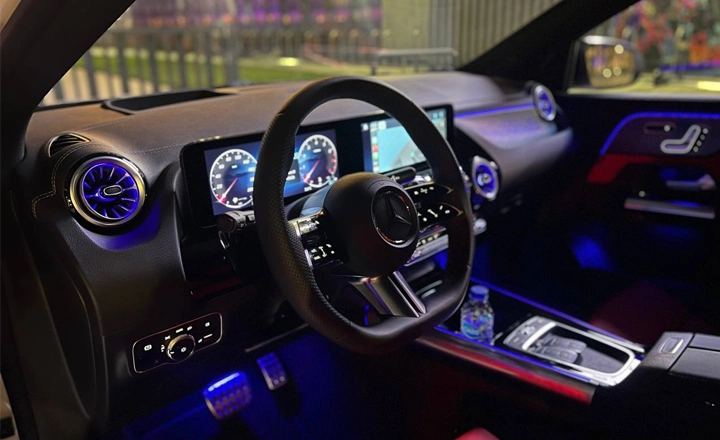
By following these practical driving tips, you can ensure a safer and more confident driving experience on UAE roads. These strategies will help you adapt to right-hand driving effectively, making your transition smoother and more enjoyable.
Driving Etiquette and Local Practices in the UAE
Understanding the local driving culture and behaviors is crucial for a smooth and respectful driving experience in the UAE. Here are some key points to keep in mind:
Driving in the UAE involves adapting to certain unwritten rules and practices that can differ from what you might be used to. Patience and courtesy are highly valued. It’s common to let other drivers merge or exit smoothly, especially in busy areas or during peak traffic times. Being patient can help reduce road stress and prevent accidents.
The use of horns in the UAE is quite different from some other countries. Horns are frequently used to alert other drivers of your presence, especially if they haven’t noticed you in their blind spot or are driving erratically. However, it’s important to avoid excessive use of the horn as it can be perceived as aggressive or impatient.
Flashing headlights is another common practice. Drivers often flash their headlights to indicate a desire to overtake or to signal other drivers to move aside. It’s a polite way of communicating on the road, but make sure to use it appropriately and not excessively.
Lane discipline is also an important aspect of driving etiquette in the UAE. The left lane is typically used for overtaking, and slower traffic should keep to the right. Maintaining proper lane discipline helps in managing traffic flow and reduces the likelihood of accidents.
Courteous Driving Practices in the UAE
Courteous driving is essential for a safe and pleasant driving experience in the UAE. Here are some key practices to keep in mind:
- Yielding to pedestrians is a fundamental aspect of courteous driving. Always be on the lookout for pedestrian crossings and be prepared to stop. Pedestrians have the right of way at marked crosswalks, and it’s important to give them ample time to cross safely. This not only ensures their safety but also fosters a respectful driving environment.
- Respecting other drivers is equally important. This means allowing other vehicles to merge into your lane, especially in heavy traffic. Use your indicators to signal lane changes and turns well in advance. Avoid aggressive driving behaviors such as tailgating, cutting off other drivers, or making sudden lane changes.
- Giving way to emergency vehicles is another critical aspect of courteous driving. If you see an ambulance, fire truck, or police car with flashing lights and sirens, safely move to the side of the road to let them pass.
- Practicing these courteous driving behaviors helps maintain a smooth flow of traffic and ensures a safer environment for everyone on the road. By showing consideration for pedestrians and other drivers, you contribute to a more respectful and cooperative driving culture in the UAE.
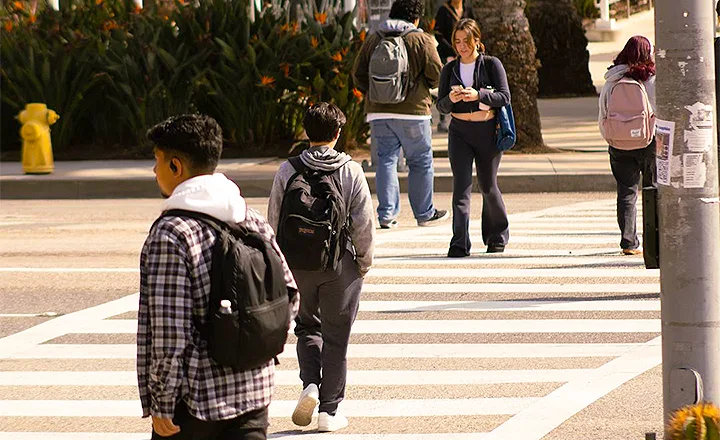
Understanding these local driving behaviors and practices will help you navigate the roads more effectively and harmoniously. By adapting to the local driving culture, you contribute to a safer and more pleasant driving environment for everyone.
Proper Use of Car Horns and Light Signals in the UAE
Using car horns and light signals correctly is essential for safe and effective communication on UAE roads.
Car horns should be used sparingly and only to alert others to your presence or to warn of potential danger, such as when a driver is about to move into your lane without noticing you. Avoid excessive honking as it can be perceived as aggressive and disruptive.
Light signals, like flashing headlights, indicate a desire to overtake or to alert others to your presence, especially in low-visibility situations. Proper use of turn signals is crucial for safe driving; always signal well in advance of turns or lane changes to give other drivers time to react.
Handling Specific Driving Challenges in the UAE
Driving in the UAE presents unique challenges depending on the environment and conditions. Here are some tips for handling these specific situations:
- Driving in Urban vs. Rural Areas
Urban areas in the UAE, like Dubai and Abu Dhabi, have high traffic volumes, numerous intersections, and more pedestrians. It’s important to stay alert, follow traffic signals closely, and be patient. In rural areas, roads can be less crowded but may have fewer amenities and lighting. Be prepared for longer stretches between services and watch out for wildlife or livestock on the roads.
- Dealing with High Traffic Volumes and Congestion
High traffic volumes are common in major cities, especially during peak hours. Plan your trips to avoid rush hours if possible. Use navigation apps to find the quickest routes and be patient in traffic jams. Maintain a safe following distance to avoid sudden stops and accidents.
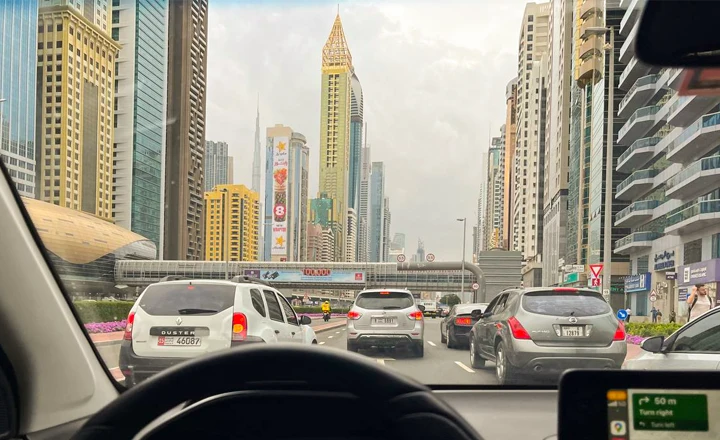
- Navigating During Different Weather Conditions
Weather conditions can vary greatly in the UAE:
- Sandstorms: Reduce speed and increase the following distance. Use low-beam headlights to improve visibility and avoid sudden lane changes.
- Heavy Rain: Roads can become slippery. Drive slowly, maintain a safe distance from other vehicles, and use headlights. Be cautious of potential flooding in low-lying areas.
- High Temperatures: Ensure your vehicle is well-maintained, with special attention to the cooling system, tires, and battery. Keep an emergency kit and plenty of water in your car.
Essential Safety Tips and Precautions for Driving in the UAE
Ensuring your safety and that of others on the road is paramount when driving in the UAE. Here are some crucial safety tips and precautions:
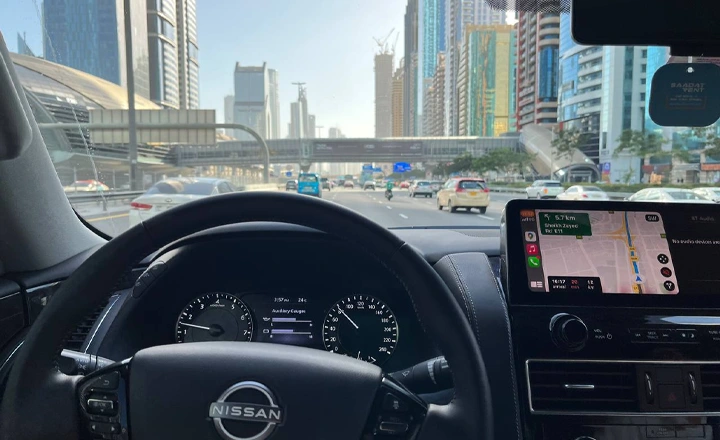
Importance of Wearing Seatbelts at All Times
Always wear your seatbelt, regardless of the distance or speed of your journey. Seatbelts significantly reduce the risk of injury in the event of an accident. Ensure all passengers, including those in the back seat, are also buckled up.
Avoiding Distractions While Driving
Stay focused on the road at all times. Avoid using your phone, eating, or engaging in any activity that takes your attention away from driving. If you need to use your phone, pull over safely before doing so.
Tips for Managing Fatigue, Especially on Long Drives
Fatigue can impair your reaction time and decision-making. Take regular breaks during long drives to rest and refresh. If you feel drowsy, stop at a safe location and take a short nap or have a cup of coffee. It’s also helpful to share driving duties with another licensed driver if possible.
Emergency Procedures and Contacts
In case of an emergency, it’s essential to know what to do and whom to contact:
- Accidents: If you are involved in an accident, call the police immediately. Provide accurate information about your location and the nature of the incident.
- Health Emergencies: For medical emergencies, dial 998 for an ambulance. Keep a list of emergency contacts and medical information readily accessible.
Roadside Assistance
Roadside assistance services are available for vehicle breakdowns or other non-emergency situations. Keep the contact information for your roadside assistance provider in your vehicle. This service can help with towing, tire changes, battery issues, and more.
Emergency Services
Familiarize yourself with local emergency numbers:
- Police: 999
- Ambulance: 998
- Fire Department: 997

Having these numbers handy can save valuable time in an emergency.
Essential Resources for Driving in the UAE
- Recommended Navigation Apps and Tools
To navigate efficiently in the UAE, use reliable navigation apps. Google Maps and Waze are popular choices for real-time traffic updates, route planning, and finding points of interest. Both apps provide accurate maps and can help you avoid traffic congestion by suggesting alternative routes.
- Contact Information for Local Driving Schools
If you need to learn driving or improve your skills, several reputable driving schools operate in the UAE. Emirates Driving Institute, Dubai Driving Center, and Abu Dhabi Driving School offer comprehensive driving courses for beginners and experienced drivers. Contact them directly to inquire about courses, fees, and schedules.
- Links to UAE Traffic Authority Resources
Stay informed about local traffic laws, regulations, and updates by visiting the official UAE Traffic Authority websites. These resources provide valuable information on road safety, driving guidelines, and the latest traffic news:
- Dubai Roads and Transport Authority (RTA)
- Abu Dhabi Department of Transport (DoT)
- Sharjah Roads and Transport Authority (SRTA)

Utilizing these resources will help you navigate the roads confidently and stay updated with the latest driving regulations in the UAE.
Last word
In summary, driving on the right side of the road in the UAE involves understanding and adapting to several key aspects. From recognizing the differences between left-hand and right-hand driving to mastering local road rules and courteous driving practices, each element plays a vital role in ensuring a safe and smooth driving experience. Proper vehicle preparation, practical driving tips, and handling specific challenges like high traffic volumes and adverse weather conditions are essential for navigating UAE roads confidently.
We encourage you to embrace these tips and drive safely and confidently in the UAE. By following the outlined guidelines and practicing patience and respect on the road, you can enjoy a stress-free and enjoyable driving experience.
We invite you to share your feedback and experiences about driving in the UAE. Your insights can help fellow drivers improve and adapt more effectively.
FAQ
Yes, driving in Dubai follows the right-hand traffic system, with steering wheels on the left side of the car.
Yes, most international drivers adjust quickly, especially if they come from countries with similar traffic rules.
Yes, road signs are in both Arabic and English, making navigation easy for visitors.
Tourists can drive in Dubai with a valid foreign license or International Driving Permit, depending on their country of origin.
Driving in Dubai can be straightforward, with well-maintained roads and clear signage. However, traffic can be heavy, especially during peak hours. It’s important to be aware of local driving habits and adhere to speed limits and traffic laws.
The 3-second rule in the UAE advises drivers to maintain a safe following distance of at least 3 seconds behind the vehicle in front of them. This helps ensure enough time to react in case of sudden stops or emergencies.
